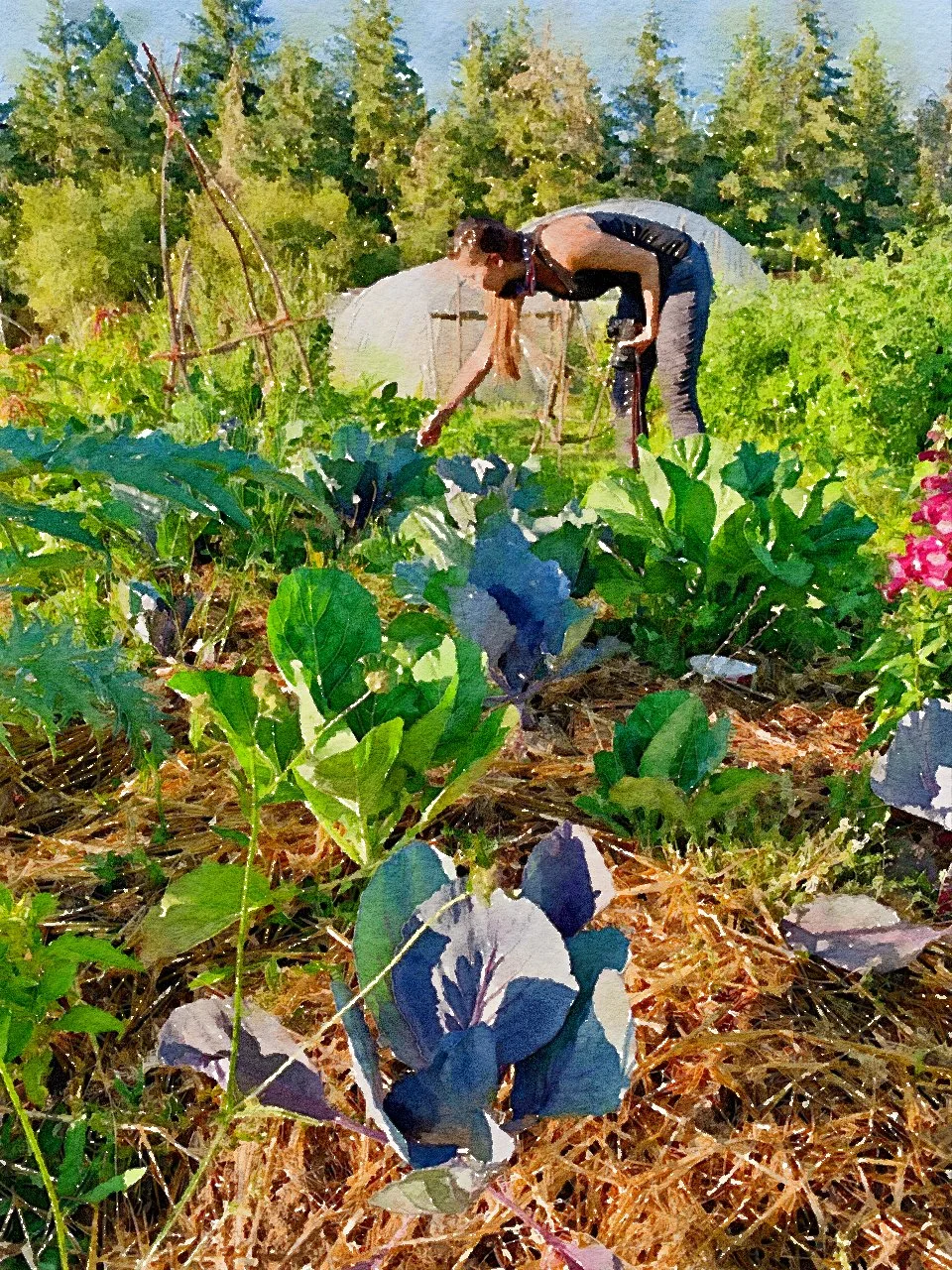Master Gardener's Advice
helping to build the garden of your dreams. what nobody tells you: kill your plants.
it’s the difference between ppl with gardens that grow magically and ppl that give up. You will have to have losses, but you will also have to TOUCH, pull, swat and play with the WILD to really get to know it.
kill more plants. eat more plants. learn to pull plants out that aren’t working. prune your plants, trim them, and know that naturally plants will die. embrace it.
dont be afraid to rip out a plant or greatly prune it. let go of need to take care of every plant perfectly. this also helps reduce stress that gardening give in the first place!
stop over-managing everything, and let nature work her magic. a major benefit about being human is our ability to removing barriers for her, without getting too much in the way.
don’t wait to get more lettuce out of a plant that is clearly dying when you could plant something else in its place.
You are not responsible for what makes plants grow.
they want:
sun
soil that is ALIVE
water
specific temperature
pruning (human technique that helps them grow much bigger and larger, by removing old dead weight, and the plant can focus energy on the healthy parts to send energy to)
harvest (animals and wind and water do this too, picking and eating and distributing the seeds far away)
pollination (so bring in plants that bring in pollinators! that is the butterflies and bees and caterpillars. turn your backyard to an extension of the forests by helping their migrations. we did, in fact, infringe on THEIR natural territories. why not let them flutter into our yards to help us make better gardens, while supporting so many species? everyone wins)
support to grow on (not always needed)
you are just creating conditions that allow plants to grow. you can be an incredible steward of the plants, but remember, you are not necessary for them. we tend to force things to grow in places they are not suited for, and get stressed when they don’t work.
when you start playing with plants, you’ll start to see some plants are harder to kill than others.
wild fennel is an example of one of those plants, in one many areas of the world, thrives when completely neglected. and they taste great on pizza, salads, sushi, etc
dandelions are amazing medicine and WANT to come up (especially in open and damaged soil), so let them.
learn what plants are uniquely suited to your land so you don’t have to do as much hard labor as those popular plants everyone else seems to want. But to do that, you may have to kill a lot of other plants.
it also means helping certain plants propagate, but it may not be the ones you meant to thrive. learn to cut and prune. the indians, the Native americans, were master gardeners, and burned regularly over and over, literally tending the wild to create a paradise that was worth being massacred for.
plants, who want to grow and thrive, flower and go to seed to create next generation. The past, present, and future exists all in that seed. Which is why plants are ok w being killed bc sometimes means helping propogate next generation. plants reward us for using them by nourishing us.
animals eat and walk over and spread seeds far and wide so those plants have a chance to continue propagating. plants want to nourish you bc in big picture you are helping them thrive. plants want to grow, want to thrive. but what do they really need from you? some dont need much at all.
you start to see a new lens to life unfolding. learn to see some immediate results to feel good. what if it was part of your lifestyle to create these conditions to help grow plants no matter where you are or what weather conditions you have.
the same way you can make ice any day, how easy could it be to create the conditions for plants to live? we know the exact temp, have the perfect mold to our preference, and know how long to wait for the ice to form. learn from others in your area, your conditions. understand how growing the garden of your dreams does not mean sitting back and watching, but takes work to kill lots of plants that were part of your original design. othertimes, it may just be watching, seeing what pops up in your open field.
plants will die, as will every living thing. be prepared to lose some to build your momentum for the habit of gardening to stick around.
instead of feeling overwhelmed in the peak season, each week pick a step to focus on. pick one thing every week to move towards the garden of your dreams. notice a shift in thought when finding something you can do now, no matter time of year or climate. where can you spend a little time this week? and rotate that around to different topics.
gardening won’t always be putting your hands in the soil. it may include planning, researching, and you may realize your season is longer than you ever could have hoped for. Bust that myth of a segmented “growing season”. Learn what nature has to say by listening, and touching, and, yes, killing more plants to grow more connected.
*Disclaimer, please be nice to plants, harvest sustainably, and do not waste them. But being frozen in place is worse than getting hands dirty, losing/succeeding, and inspiring others with your masterpieces once you get through the hard days.
Things to research
Fun things you can focus on in your research (pick one topic a week). put it in your calendar just like your workout schedule every day! Set up a system to learn something new so you can set up a garden of your dreams (tho you can never be in charge of nature)
Climate, local (max/mins as well as averages, and the conditions your beloved plants thrive in)
Soil & fertility
Making compost (everything dies eventually, and it’s an important part of the circle!)
Planting
Watering
Pruning/Trellising
Harvesting
Mindset
When you do this regularly, you may start to notice you growing season is much longer than you ever realized.
Growing Zones
here in US, the area is defined as ability to withstand minimum temps. but this is just a starting point when picking your plants.
the idea is you have things in common w ppl in same color growing zone. But remember, the US IS HUGE.
these are overly simplified, and therefore ineffectual
Only thing in common w these areas is the MIN WINTER TEMPERATURE
that is like saying 2 ppl each weigh 170 lbs, and assume they look the same. but so many other factors. height, health, amount of muscle vs fat. just knowing someones weight isn’t enough to really make a judgement of their looks.
For example, Oregon and Illinois are in same zone, but growing seasons are VERY different.
same 5B growing zone, bc same min winter temps
Various amts of moisture, ph of soil, sunlight exposure, daily temp swings (esp between day and night), average length of winter, biodiversity of soil, surrounding forest and migrating pollinators
You can get easy specific growing data with “[your city] climate data” important to note bc plants may die bc of these assumptions you make. Best way to learn is plant it and see what happens. what works in your yard may be VERY different than what works in your neighbor’s yard.



